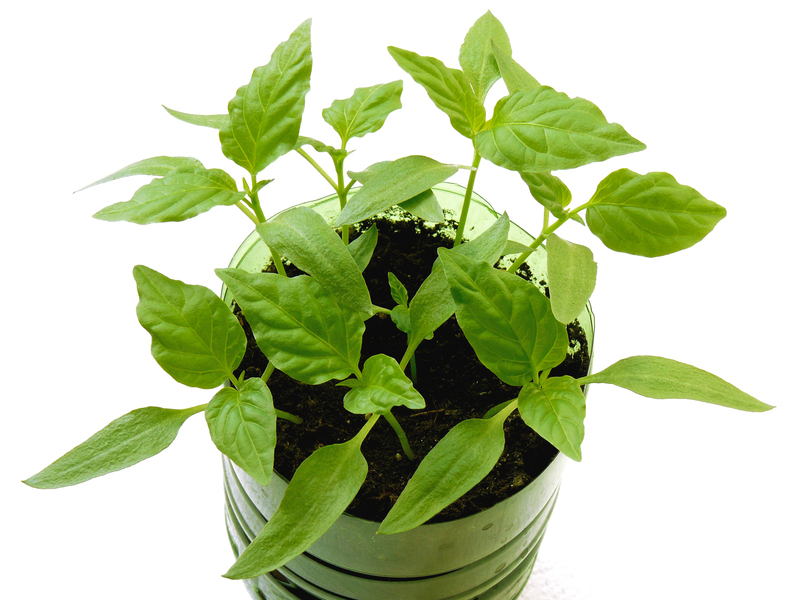6 Green Waste Facts Worth Knowing
Posted on 25/09/2024
Living in the modern world, it's crucial to pay attention to how our activities impact the environment. One significant area of concern is how we handle waste, particularly green waste, which refers to organic waste materials such as grass clippings, leaves, branches, and vegetable scraps. Understanding green waste and its implications can help us make more informed decisions about our waste management practices. Here are six critical green waste facts that are worth knowing.
1. Green Waste Comprises a Significant Portion of Landfill Waste
Green waste makes up a substantial portion of the waste that ends up in landfills. According to the Environmental Protection Agency (EPA), yard trimmings alone accounted for approximately 13.1% of landfill waste in 2018, which amounts to around 35.4 million tons annually. While it may seem convenient to toss yard waste into the trash, the consequences go far beyond convenience. When green waste decomposes in a landfill, it generates methane, a potent greenhouse gas that contributes to global warming.
By opting for composting or other recycling methods, we can significantly reduce the volume of green waste sent to landfills. Municipalities can play a crucial role by providing green waste collection services and promoting community composting programs.

2. Composting Transforms Green Waste into Valuable Soil
Composting is an environmentally friendly way to manage green waste. When organic matter decomposes in a controlled environment, it creates nutrient-rich compost that can improve soil health and fertility. This process occurs through a combination of aerobic bacteria, fungi, and other microorganisms that break down organic materials.
Compost can enhance soil structure, increase water retention, and provide valuable nutrients to plants. Moreover, composting reduces the need for chemical fertilizers, which can have detrimental effects on the environment. Home gardeners, farmers, and even urban green spaces can benefit immensely from the use of compost.
3. Green Waste Collection Programs Reduce Carbon Footprint
Many local governments offer green waste collection programs to help residents manage their organic waste responsibly. These programs typically involve the curbside pickup of green waste, which is then transported to composting facilities. By participating in these programs, individuals can contribute to significant environmental benefits.
For instance, centralized composting facilities can manage large volumes of green waste more efficiently than individual compost piles. This efficiency translates to a reduced carbon footprint, as the transportation and processing of green waste are optimized. Additionally, the compost produced can be used in local parks and public spaces, further promoting environmental sustainability.
4. Green Waste Can Be Used to Generate Renewable Energy
Green waste is not only valuable for producing compost but also for generating renewable energy. Through processes like anaerobic digestion, organic waste can be converted into biogas. This biogas can be used to produce electricity, heat, and even vehicular fuel.
Anaerobic digestion involves the decomposition of organic material in the absence of oxygen, resulting in the production of methane-rich biogas. This process not only provides a renewable energy source but also helps reduce the reliance on fossil fuels. Countries like Germany and Sweden have been at the forefront of utilizing green waste for renewable energy, showcasing the potential for sustainable waste management practices.
5. Proper Green Waste Management Supports Biodiversity
Properly managing green waste can have a positive impact on biodiversity. Organic matter from green waste can serve as a habitat and food source for various microorganisms, insects, and other wildlife. By composting green waste, we can create environments that support a diverse range of species.
For example, compost piles attract decomposers like worms and beetles, which play a crucial role in nutrient cycling. Additionally, leaf litter and woody debris provide critical habitats for small mammals, birds, and amphibians. By maintaining healthy ecosystems through green waste management, we can support biodiversity and ensure the stability of local environments.

6. Reducing Green Waste Helps Mitigate Climate Change
One of the most pressing issues of our time is climate change, and reducing green waste can play a role in mitigating its effects. When green waste decomposes in landfills, it produces methane, a potent greenhouse gas that has a more significant impact on global warming than carbon dioxide. By diverting green waste from landfills and opting for composting or energy recovery methods, we can reduce methane emissions significantly.
Moreover, composting helps store carbon in the soil, acting as a carbon sink. This process not only reduces greenhouse gas emissions but also enhances soil quality, making it more resilient to extreme weather events. Every effort to manage green waste responsibly contributes to a broader strategy for combating climate change.
Conclusion
Green waste management is a vital aspect of sustainable living and environmental conservation. By understanding and implementing practices such as composting, participating in green waste collection programs, and supporting renewable energy initiatives, we can make a substantial positive impact. These six green waste facts highlight the importance of responsible waste management and demonstrate how individual and community actions can lead to significant environmental benefits. As we move forward, it is essential to continue educating ourselves and others about green waste and its potential to contribute to a healthier, more sustainable planet.
From reducing landfill waste to generating renewable energy and supporting biodiversity, the possibilities for managing green waste effectively are vast. By embracing these practices, we not only reduce our carbon footprint but also invest in a greener, more resilient future for generations to come.










